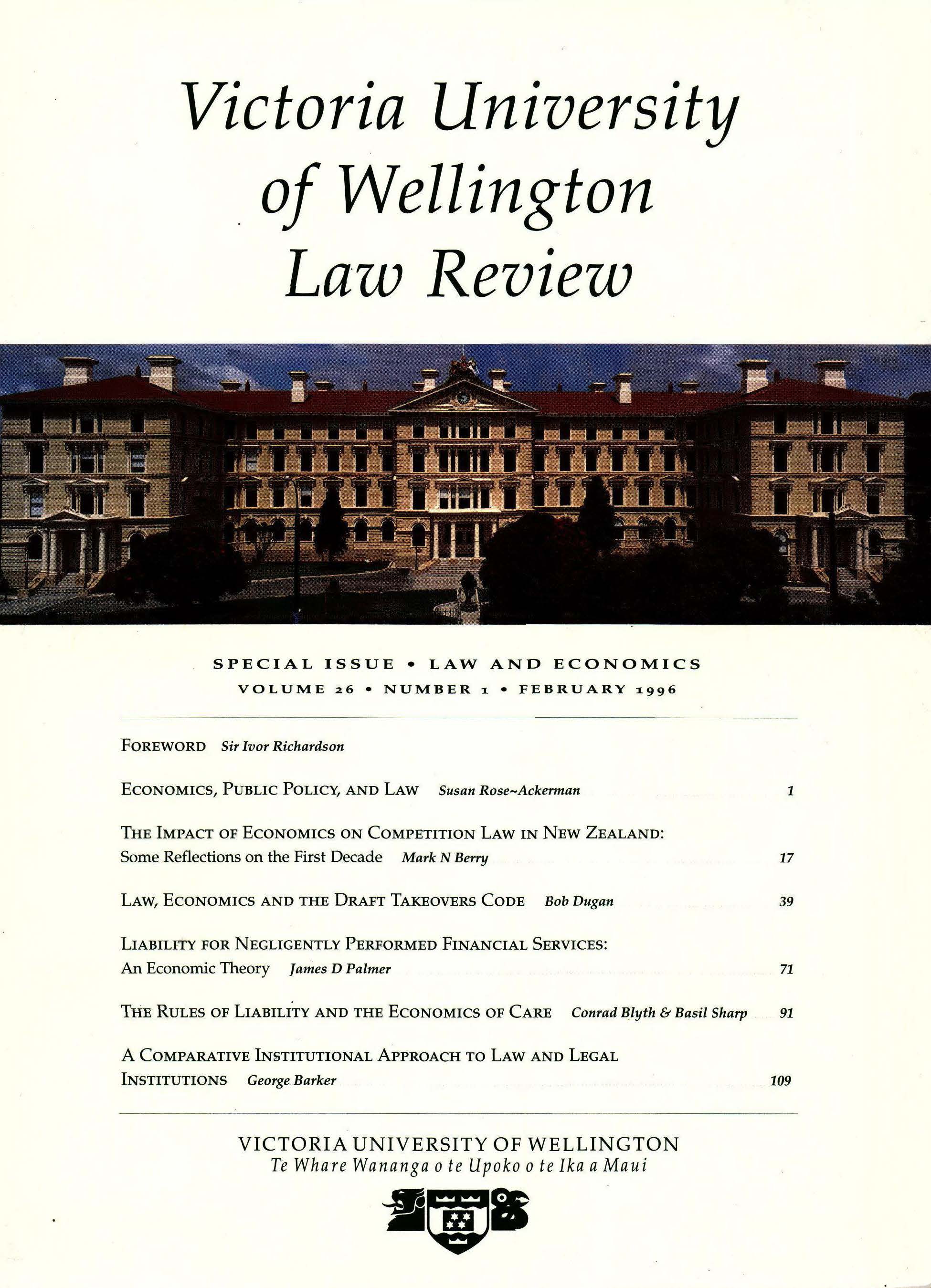The Rules of Liability and the Economics of Care
DOI:
https://doi.org/10.26686/vuwlr.v26i1.6179Abstract
In 1992, the New Zealand Law Commission proposed changes to the rules of liability applied in cases of negligence under the law of torts (Law Commission Apportionment of Civil Liability (Preliminary Paper No 19, Wellington, 1992)). The Commission proposed to retain the rule that where there are two wrongdoers who together cause a single loss each is liable to the injured person for up to 100% of the plaintiff's claim. Is this rule justified economically? This article analyses the rule (the doctrine of "solidary liability") in economic terms, as well as the "proportionate liability" rule as an alternative. The authors begin with the conditions which produce an optimal allocation of economic resources in society, and then undertake an alternative analysis of the demand and supply of care which is suitable for a legal framework of negligence and concurrent liability. The authors then summarise their conclusions about the economic efficiency of the two basic liability rules.
Downloads
Downloads
Published
How to Cite
Issue
Section
License
Authors retain copyright in their work published in the Victoria University of Wellington Law Review.


